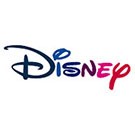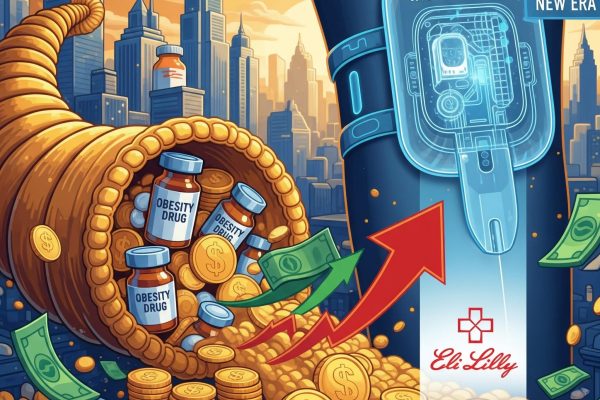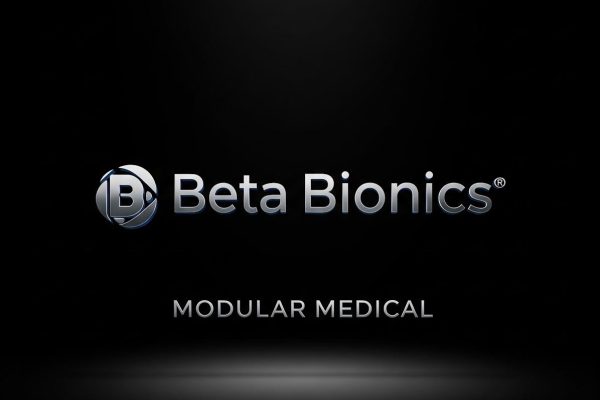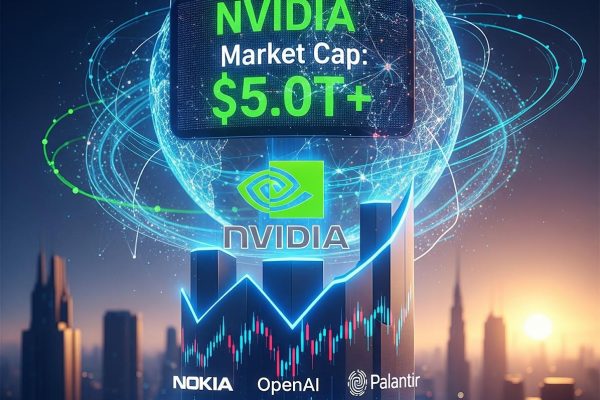Hump Day Presents “The Great Tech Tumble of ’24” – $EPRX $INDP $QXO $T $VIX Rise!

Market Indices Performance
The Nasdaq Composite experienced its most significant single-day decline in over four years, plummeting 3.6% to close at 17,342.41. This sharp downturn was mirrored by other major indexes:
- S&P 500 fell 2.31%, settling at 5,427.13
- Dow Jones Industrial Average dropped 1.2%
- The Nasdaq Composite experienced its most significant single-day decline in over four years, plummeting 3.6% to close at 17,342.41.
- Russell 2000, representing smaller companies, declined 2.1%, though it remained up 8.3% for the year.
- The iShares Micro-Cap ETF closed at $125.40,-2.36%.
Sector Performance Highlights
The information technology sector led the market decline, dropping 4.1% despite being up 23.5% for the year. Other sectors also experienced significant losses:
- Consumer Discretionary: fell 3.9%
- Communication Services: declined 3.8%
- Industrials: dropped 2.2%
- Real Estate and Materials: both down 1.3%
In contrast, some defensive sectors showed resilience, with Utilities gaining 1.2% and Healthcare rising 0.8%. The Energy sector managed a slight 0.2% increase, while Consumer Staples remained flat. This sector performance highlights the market’s shift away from growth-oriented tech stocks towards more defensive positions amid economic uncertainties.
Notable Company Performances
Lamb Weston Holdings Inc. (LW) emerged as the worst performer among S&P 500 stocks, with shares plummeting 28% after reporting disappointing fiscal fourth-quarter results and cautioning about future sales challenges[1]. Tesla Inc. (TSLA) followed closely, experiencing a 12.3% drop after releasing mixed quarterly results, including a 7% year-over-year decline in automotive revenue . Despite surpassing revenue and profit estimates, Alphabet Inc. (GOOGL) saw its shares fall by 5% due to concerns over profit margins and YouTube advertising revenue. QXO, Inc. (Nasdaq: QX) $123.56, +56.32%), a company expected to become a tech-forward leader in the building products distribution industry, today announced that it has entered into purchase agreements with certain institutional and accredited investors for a new $620 million private placement financing of an aggregate 67,833,699 shares of QXO common stock at a price of $9.14 per share (the “New Private Placement”).
Other notable performances included:
* AT&T Inc.(T, $19.16, +5.22%): Added 419,000 new wireless subscribers in Q2, surpassing expectations
* Boston Scientific Corp.: Increased its full-year profit outlook, boosting shares in premarket trading, but faded to close at $77.76, -1.06%.
* Capital One Financial Corp.: Profit fell 61% in Q2 due to higher provisions for loan losses
* Chubb Ltd.: Q2 profit exceeded estimates, but closed at $260.04, -1.22%.
* Deutsche Bank AG: Posted a loss in Q2 due to a €1.3 billion provision for an investor lawsuit
Global Markets and Commodities
European markets mirrored the negative sentiment seen in the U.S., with major indices falling due to weak results from companies like LVMH. In Asia, Japan’s Nikkei 225 declined for the sixth consecutive session, dropping 1.1% to 39,154.85, as the yen reached its highest value in months. Hong Kong’s Hang Seng Index fell 1.1% to 17,049.49, led by a 1.6% drop in the Hang Seng Tech Index. In the commodities market:
- Crude oil: U.S. benchmark rose 1.2%, while Brent crude increased 0.5%
- Gold: Prices edged up slightly to around $2,420 per ounce
- Bitcoin: Increased marginally to approximately $66,500
- The U.S. dollar remained relatively stable as traders awaited upcoming inflation data and the Federal Reserve meeting
Economic Data
- Weekly MBA Mortgage Applications Index -2.2%; Prior -3.9%
- The Advanced June International Trade in Goods report came in at -$96.8B
- The Advanced June Retail Inventories came in at .7%
- The June Advanced Wholesale Inventories report clocked in at .2%
- The Preliminary July S&P Global US Manufacturing PMI report came in lower at 49.5
- The Preliminary July S&P Global Services PMI report came in higher at 56
- The June New Home Sales report came lower than expected at 617K
VP Watchlist Updates

Eupraxia Pharmaceuticals (EPRX, $2.599,+3.19% and is up +3.86% at $2.69 in the aftermarket) is a clinical-stage biotechnology company focused on the development of locally delivered, extended-release products that have the potential to address therapeutic areas with high unmet medical need. The Company strives to provide improved patient benefit and has developed technology designed to deliver targeted, long-lasting activity with fewer side effects. DiffuSphere™, a proprietary, polymer-based micro-sphere technology, is designed to facilitate targeted drug delivery, with extended duration of effect, and offers multiple, highly tuneable pharmacokinetic (PK) profiles. This investigational technology can be engineered for use with multiple active pharmaceutical ingredients and delivery methods.
Note that Eupraxia recently completed a Phase 2b clinical trial (SPRINGBOARD) of EP-104IAR for the treatment of pain due to osteoarthritis of the knee. The trial met its primary endpoint and three of the four secondary endpoints. Eupraxia has expanded the EP-104 platform into gastrointestinal disease with the Phase 1b/2a RESOLVE trial for treating EoE. Eupraxia is also developing a pipeline of later- and earlier-stage long-acting formulations. Potential pipeline indications include candidates for other inflammatory joint indications and oncology, each designed to improve on the activity and tolerability of currently approved drugs.
On May 23, Eupraxia announced that regulators in Australia and Canada have cleared the Company’s request to expand its Phase 1b/2a RESOLVE trial, which is evaluating the safety and efficacy of EP-104GI as a treatment for eosinophilic esophagitis (“EoE”). For further details about Eupraxia, please visit the Company’s website at: www.eupraxiapharma.com.
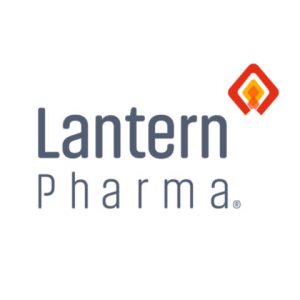
Shares of Lantern (LTRN), an artificial intelligence (“AI”) company developing targeted and transformative cancer therapies using its proprietary RADR® AI and machine learning (“ML”) platform with multiple clinical stage drug program, closed at $4.42, -7.14% and is up +4.07% at $4.60 in the aftermarket.
On July 10, Lantern announced a significant advancement towards the development of a diagnostic for its drug candidate LP-184. The diagnostic is currently based on qRT-PCR (quantitative real-time polymerase chain reaction) technology and is focused on quantifying the amount of PTGR1 RNA in patient tumor samples to assess the potential for sensitivity to Lantern’s drug candidate LP-184. The company plans to further develop and validate the assay for its use as a potential tool for patient selection in later stage clinical trials across a broad range of solid tumors that have shown sensitivity to LP-184. Panna Sharma, CEO of Lantern Pharma stated, “This milestone represents a significant leap forward in our precision oncology approach and in ensuring that we enrich our future LP-184 clinical trials with the patients we believe will be most likely to benefit. By working to develop a companion diagnostic for LP-184, we’re not just advancing a drug candidate; we’re paving the way for more personalized and effective cancer treatments for patients that have the highest likelihood of benefitting from the therapy. The planned use of biomarkers like PTGR1 in our clinical trials exemplifies our commitment to data-driven, patient-centric drug development.”
Panna Sharma, CEO of Lantern, was interviewed recently on the ‘Today In Nashville’, a program hosted by Carole Sullivan and associated with Nashville’s WSMV 4, an NBC affiliate. Watch it here to learn more.
On June 12, Lantern announced that the Japan Patent Office (JPO) has issued a Certificate of Patent for patent application no. 2021-513267 / registration no. 7489966 directed to Lantern Pharma’s drug candidate LP-284 ((+)N-hydroxy-N-(methylacylfulvene)urea). The Certificate of Patent entitled “Illudin Analogs, Uses Thereof, and Methods for Synthesizing the Same” covers molecule LP-284, including claims covering the new molecular entity. A Certificate of Patent is issued after JPO examinations have confirmed the merits of a patent request. Lantern values the broad protection this latest patent provides. Lantern estimates that LP-284 can have the potential to improve outcomes for 40,000 to 80,000 patients with blood cancers annually, with a global annual market potential of $4 Billion USD.

Shares of Indaptus Therapeutics, Inc. (Nasdaq: INDP) closed at $2.12, +0.00% and is up +3.77% at $2.20 in the aftermarket. Indaptus is a company with the ability to harness both the body’s innate and adaptive immune responses, believes that they are uniquely positioned to revolutionize the treatment of cancer and certain infectious diseases. Indaptus Therapeutics has evolved from more than a century of immunotherapy advances. The Company’s novel approach is based on the hypothesis that efficient activation of both innate and adaptive immune cells and pathways and associated anti-tumor and anti-viral immune responses will require a multi-targeted package of immune system-activating signals that can be administered safely intravenously (i.v.). Indaptus’ patented technology is composed of single strains of attenuated and killed, non-pathogenic, Gram-negative bacteria producing a multiple Toll-like receptor (TLR), Nucleotide oligomerization domain (Nod)-like receptor (NLR) and Stimulator of interferon genes (STING) agonist Decoy platform. The products are designed to have reduced i.v. toxicity, but largely uncompromised ability to prime or activate many of the cells and pathways of innate and adaptive immunity. Decoy products represent an antigen-agnostic technology that have produced single-agent activity against metastatic pancreatic and orthotopic colorectal carcinomas, single agent eradication of established antigen-expressing breast carcinoma, as well as combination-mediated eradication of established hepatocellular carcinomas and non-Hodgkin’s lymphomas in standard pre-clinical models, including syngeneic mouse tumors and human tumor xenografts.
On June 4, Indaptus announced that its Chief Medical Officer, Roger Waltzman, M.D., will present an update on the Company’s lead product candidate, Decoy20, at the 7th Annual Next-Gen Immuno-Oncology Conference in Boston on June 20-21, 2024. Dr. Waltzman will present preliminary results from the Company’s ongoing Phase 1 study of Decoy20, an intravenous treatment using killed bacteria designed to broadly stimulate the immune system, in patients with advanced solid tumors.
On June 3, Indaptus announced updated data from its ongoing Phase 1 clinical trial of Decoy20 in patients with solid tumors. The data were featured in a poster presentation at the American Society of Clinical Oncology (ASCO) Annual Meeting on June 1 in Chicago, Illinois.
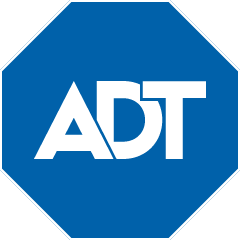 Shares of ADT Inc. (ADT), a leading provider of monitored security and automation solutions for residential and small business customers in the United States and Canada, closed at $7.69, -1.66% after establishing a new 52-wk high of $7.92 during intraday trading on Monday. ADT is due to report quarterly results on Thursday, Aug. 1. On June 17, ADT announced the appointment of Dan Houston and Danielle Tiedt to the Company’s Board of Directors as additional independent directors. In conjunction with their appointments, Houston and Tiedt will both join the Board’s Nominating and Corporate Governance Committee, while Houston will also join the Board’s Compensation Committee. Houston is chairman, president and chief executive officer of Principal Financial Group, a global financial services company with $709 billion of assets under management. He joined Principal in 1984 and has served as chief executive officer since 2015. Houston serves on several boards of non-profit organizations, including the American Council of Life Insurers, Iowa State University Business School Dean’s Advisory Council and Partnership for a Healthier America. As chief marketing officer for Google’s YouTube, Tiedt oversees global marketing strategy, product marketing and brand vision. During her tenure, YouTube has grown to a $40 billion business operating in 76 countries. Prior to joining Google in 2012, Tiedt held various leadership roles in technology product management and marketing at Microsoft. She serves on the board of the 4-H Foundation, America’s largest youth development organization.
Shares of ADT Inc. (ADT), a leading provider of monitored security and automation solutions for residential and small business customers in the United States and Canada, closed at $7.69, -1.66% after establishing a new 52-wk high of $7.92 during intraday trading on Monday. ADT is due to report quarterly results on Thursday, Aug. 1. On June 17, ADT announced the appointment of Dan Houston and Danielle Tiedt to the Company’s Board of Directors as additional independent directors. In conjunction with their appointments, Houston and Tiedt will both join the Board’s Nominating and Corporate Governance Committee, while Houston will also join the Board’s Compensation Committee. Houston is chairman, president and chief executive officer of Principal Financial Group, a global financial services company with $709 billion of assets under management. He joined Principal in 1984 and has served as chief executive officer since 2015. Houston serves on several boards of non-profit organizations, including the American Council of Life Insurers, Iowa State University Business School Dean’s Advisory Council and Partnership for a Healthier America. As chief marketing officer for Google’s YouTube, Tiedt oversees global marketing strategy, product marketing and brand vision. During her tenure, YouTube has grown to a $40 billion business operating in 76 countries. Prior to joining Google in 2012, Tiedt held various leadership roles in technology product management and marketing at Microsoft. She serves on the board of the 4-H Foundation, America’s largest youth development organization.
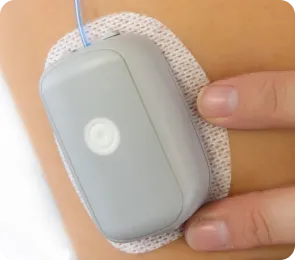
Quote of the Day
Citations
- https://www.investopedia.com/dow-jones-today-07242024-8682694
- https://www.barrons.com/livecoverage/stock-market-today-072324
- https://www.morningstar.com/news/marketwatch/20240724647/these-sp-500-stocks-fell-the-most-on-wednesday-led-by-lamb-weston-and-tesla
- https://www.theglobeandmail.com/investing/markets/stocks/GOOGL/pressreleases/27583045/stock-market-update-analysis-july-24th-2024/
- https://www.usnews.com/news/business/articles/2024-07-24/stock-market-today-asian-stocks-fall-after-a-torrent-of-profit-reports-leaves-wall-street-mixed
Economic Reports
On Tuesday, the June Retail Sales 0.0% & June Retail Sales sans-auto .4%, June Import Prices .0%, June Import Prices sans-oil .2%, June Export Prices -.5%, June Export Prices san-agriculture -.6%, May Business Inventories .5%, the July NAHB Housing Market Index came in lower at 42.
On Wednesday, the Weekly MBA Mortgage Applications Index came in at -2.2%, The Advanced June Retail Inventories came in at .7%, The June Advanced Wholesale Inventories report clocked in at .2% , The Preliminary July S&P Global US Manufacturing PMI report came in lower at 49.5, The Preliminary July S&P Global Services PMI report came in higher at 56, & The June New Home Sales report came lower than expected at 617K.
Videos
Post View Count : 501







